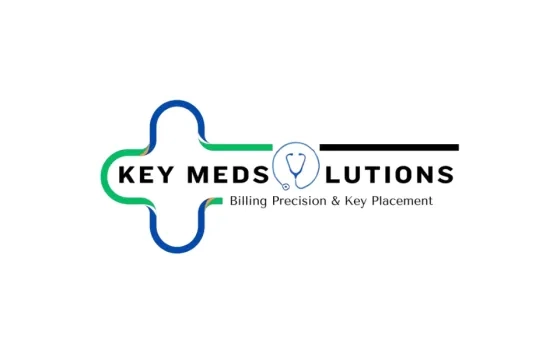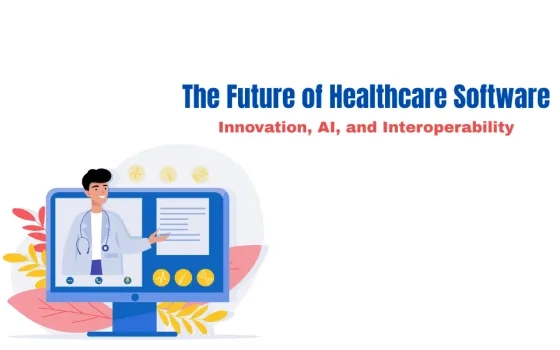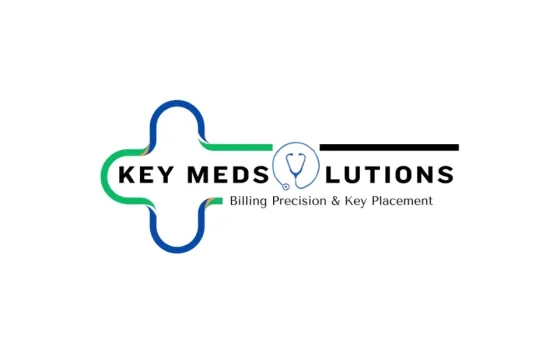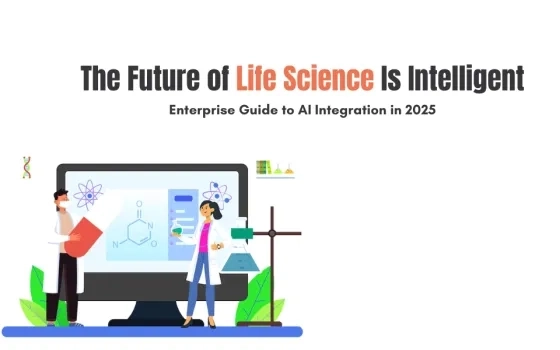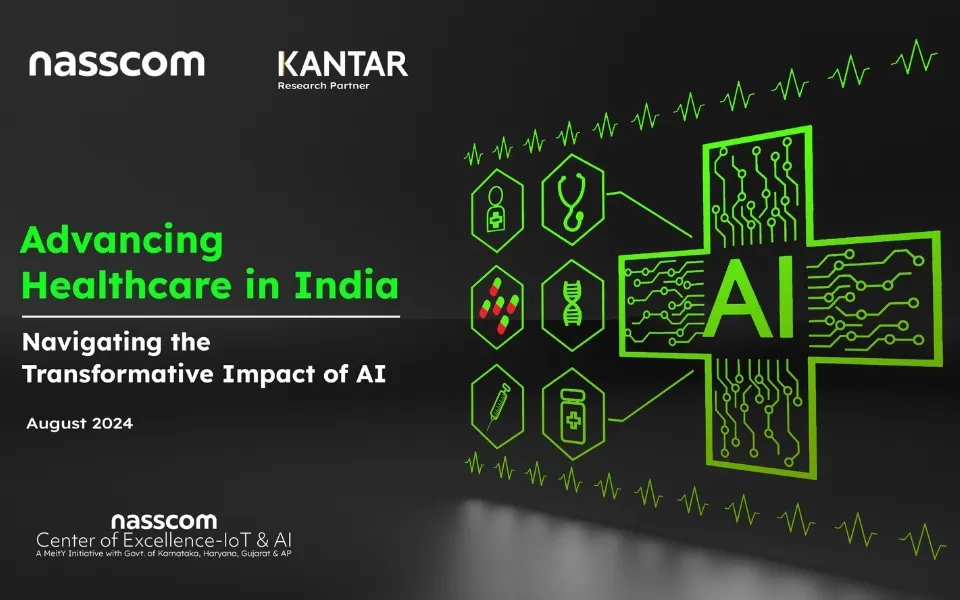The rapidly evolving healthcare landscape demands superlative patient care. Achieve this by streamlining operations using healthcare software solutions. Ensure you appoint a professional software development company experienced in adhering to stringent healthcare regulations.
The stakes are high. So should be the standards of your healthcare software. Regulatory compliance must not be an afterthought; it must be a cornerstone of your healthcare software. Further, integrate interoperability. With different unique workflows to unify, interoperability is now a necessity.
Let us comprehensively try to define the process of developing custom healthcare software solutions. We will start by identifying core problems. Then, determine the steps to craft innovative, secure, compliant, and seamless solutions.
Understanding The Needs Of Healthcare Software Solutions
Embarking on developing custom healthcare software is about delivering critical solutions. They help save lives and enhance patient care by streamlining healthcare processes. So, approach the task with diligent planning. Adopt the below-given steps.
Understand the workflow
Healthcare workflows are unique. They have exclusive requirements and challenges. So start by understanding them. Decipher how it affects patient engagement. Dig deep and research to find the root cause of the challenges. The ultimate goal is to streamline data management and automate administrative tasks to enhance patient care.
Stakeholder Engagement
Healthcare is a collective effort. As a software developer company, you must engage with everybody involved in the healthcare ecosystem. Collect insights from all providers, patients, and administrative staff. Interview them, discuss with them, and organize feedback sessions. This might seem exhaustive, but it will make your end product resonate with your client's demands.
Regulatory Requirements
Compliance with HIPAA in the US, GDPR in Europe, and other local regulations is non-negotiable. So, go through all statutory and regulatory requirements you must fulfill. Meticulously integrate them into your healthcare software solution to avoid penalties and legal issues. Further, adhering to these regulatory standards will also safeguard patient data. Since any breach can result in financial and reputational loss, you must be extremely diligent about following the requirements of these standards. Additionally, you must also ensure that you are aware of the local statutory requirements, if any. Incorporate them to make the healthcare facility comply with them.
This initial stage sets the foundation for the custom healthcare software development process. It will help lay the groundwork with precision.
Planning And Design Of Healthcare Software Solutions
The transition from understanding the workflow to designing for the same requires extensive planning. In this phase, you will see the healthcare solution taking shape. Hence, it is a very crucial stage. The steps involved include:
Project Planning
Craft a detailed project plan or proof of concept. Along with setting timelines and budgets, also anticipate the challenges. Allocate resources wisely. Select your development team with precision. Ensure every member of your healthcare software development company team is clear about their role. Set achievable milestones for everyone. This clarity and foresight will keep them agile and focused.
Design Thinking
Embrace design thinking to prioritize user experience. Go beyond software aesthetics to consider usability, accessibility, and simplicity. Create personas and map user journeys. This will make your healthcare software solution intuitive and empower everyone, from doctors to patients.
Prototyping
Build prototypes. These are interactive models that will showcase your software planning. Stakeholders can explore this prototype to understand whether you need to make changes. This will help you refine the prototype. Following this iterative process will allow you to refine your vision and ensure the final product meets your requirements.
Prototypes serve as a bridge between concept and creation. You can leverage it to fine-tune the product before starting with the development. Next, we will talk about how to select the right technology stack.
Choosing The Right Technology Stack For Healthcare Software Solutions
Selecting the right technology stack is about facilitating compatibility, durability, and flexibility. So, consider the following features before making the final selection.
Interoperability
The healthcare ecosystem comprises different systems and workflows. Hence, it is essential to prioritize seamless integration. Whether adopting electronic health records or ensuring compatibility with existing legacy systems, interoperability is the key. So select a tech stack that facilitates it so your healthcare software solution does not act in isolation. It must be a cohesive part of the entire healthcare network.
Security and Compliance
Healthcare systems collect a humongous amount of data. This is not limited only to confidential personal information. Here, systems also collect transaction data, health records, etc. Hence, security must form the core of all healthcare software solutions. So, choose technologies that support robust encryption methods and access controls. They must also align with prevalent HIPAA, GDPR, and other relevant regulations. As a software development company, you must be diligent with this selection. Remember, your healthcare client will leverage it to build patient trust.
Scalability
Healthcare will invariably evolve and grow. Consider this and select a tech stack that can scale up with the healthcare facility. Additionally, ensure this scalability is both in handling growing data volumes and adding new functionalities. Integrating this foresight will make your healthcare software solution relevant and responsive to the changing healthcare requirements.
This selection process is meticulous. You must take great care. The right selection will ensure your software grows and adapts to accommodate the growth of your healthcare client.
Importance of Development and Testing in Healthcare Software Solutions
Here, all your concepts and plans will transform into functional software. So, adopt the following processes to ensure its quality, utility, and applicability.
Agile Methodology
Adopt the agile framework. Divide the development process into sprints. This will help you to incorporate feedback and continually refine your work by adapting to changes. Further, breaking the project into manageable sprints will help you to deliver incremental value. This will ensure measurable and meaningful progress.
Quality Assurance
Rigorous testing is mandatory for the success of a healthcare software project. For a healthcare software solution, quality assurance plays a critical role. Implement a multi-layered testing strategy consisting of:
- Unit testing to ensure the functionality of each component in isolation
- Integration testing to check whether these components can work seamlessly together
- User acceptance testing to validate that your healthcare software solution meets user expectations
This comprehensive approach will help you catch and correct issues early in development. Hence, your output will be reliable and user-friendly.
Security Testing
Given the sensitivity of healthcare data, security testing must be a continuous process. So, employ the latest tools and techniques. They will help you simulate potential threats and vulnerabilities. Integrate security measures to help your software withstand attacks and protect patient information. Adopting this proactive stance on security will reflect your dedication and commitment to safeguarding user data.
This is perhaps the most rewarding phase in the entire SDLC. Here, a prototype evolves into a robust, secure, and compliant solution.
Deployment And Maintenance Of Healthcare Software Solutions
Here, you will deploy the developed healthcare software solution into its live environment. This is a critical phase. As a custom software development company in the US, let us see how you can navigate these challenges.
Deployment Strategy
You must adopt a lot of caution here. Research the systems that your solution will interact with. Find out which tools will facilitate seamless integration. Develop a detailed roll-out strategy that must account for both technical and human glitches. Further, carry out the deployment in a phased manner. This will benefit you in many ways. When you gradually introduce the new software to its users, you can make adjustments to minimize disruptions.
Further, you must also schedule training sessions. This will empower users with the knowledge and confidence to maximize the utilization of the developed healthcare software solution.
Continuous Maintenance
Healthcare is a 24/7 job. Hence, you cannot let your software stop working. But to ensure it works to its capacity 24/7, you must keep monitoring and maintaining it. Continuous Maintenance includes regular updates, bug fixes, and performance enhancements. You must leverage user feedback and the latest technological advancements to enable this. Maintenance is a continuous cycle. Hence, consult with your client about this before you take up the project.
Feedback Loop
Encourage open communications with your users. This will foster an environment where you can ask them for feedback, and they will only be glad to provide it. This input is invaluable for fuelling further software refinement and innovation. Utilize this feedback actively to ensure your software stays relevant, responsive, and aligned with the changing healthcare needs.
Navigate this phase using a strategic, user-focused approach to further the chances of a successful deployment.
Conclusion
Building a custom healthcare software solution involves more than just coding. It is a meticulous mix of diligence, innovation, commitment, and empathy. Developing a healthcare solution for a software development company is rewarding. It will help you contribute to enhanced patient care by streamlining healthcare operational workflows and upholding the highest privacy and security standards.










